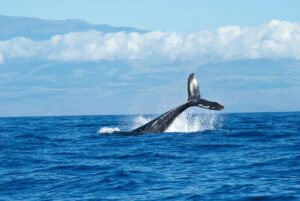People are becoming increasingly aware of the importance of protecting the wilderness and ecosystems, and businesses are developing new strategies to preserve nature.
What is wildlife conservation? Wildlife conservation aims to protect wild animals, plant species, and their habitats by preserving natural ecosystems. The main goal of conservation biology is to preserve biodiversity and the natural resources essential for human survival.
The drivers are not always the compassion for animals, plants, and the general planet hearth; There may be economic reasons, reputational, or simply the selfish urge of the human species to survive.
Regardless of the drivers, awareness of the importance of nature is crucial for helping the wilderness and biodiversity.

What Is the Reason why Conservation Is Important?
The overpopulation and general effect of humans on nature are detrimental. Conservation aims to overcome and counteract the negative impact of human activities.
When we talk about wildlife, we usually refer to the fauna of a specific ecosystem. But in reality, we should include the flora, insects, and all the organisms that shape a particular habitat.
There are many reasons why the diversity of the fauna and flora is endangered. Loss of habitat, a decline in population number, and a decline in genetic traits are severe threats to many species.
Climate change and global warming are the main drivers of ecosystem fragmentation and degradation.
In extensive terms, any stress to habitat, wildlife species, insects, plants, and microorganisms can have serious consequences.
Unregulated hunting and poaching activities, deforestation for timber and food production, agricultural activities, pesticide usage, overfishing, overgrazing, and pollution produced by tourism and transport can be dangerous for animals, plants and microorganisms.
Wildlife is often used for food, medicines, clothes, and other needs.
These are all activities and reasons why in our time, we encounter many animals and plant species that are on the verge of extinction.
Is Extinction Always Wrong?

Over the centuries, many species have gone extinct. Many have been wiped out by natural events and natural species selection.
But, extinction and loss of biodiversity are constantly worrying events that need to be addressed, significantly if these events are correlated to human activities. That is the real goal of conservation and the honest endeavor of conservation biologists.
What Is Wildlife Conservation? The Value of Nature and Protecting the Natural World

To understand the importance of wildlife conservation, we must understand the decisive importance of nature, natural resources, and biodiversity.
Agriculture and fishing rely heavily on natural resources. Many natural environments are essential for the economy of many countries, helping with tourism. Nature has enabled scientists to find medical treatments and energy sources. Nature helps to produce clean water. These are all examples of how nature is sustaining our economy and welfare.
It may sound incredibly selfish, but if we want to change our behavior toward nature, we need to create awareness about the potential consequences for the human population of loss of diversity and species.
Nature is the cornerstone of our lives, and we must manage it properly.
Examples of Losses

How Many Elephants Are Killed Every Year?
Elephant poaching is the infamous practice of killing elephants to remove and sell ivory. It has been a pressuring problem for many years and has reached its peak, according to scientists, in 2011.
There have been studies showing how the total number of elephants poached has decreased in the last years, but there is a lot more to do if we want to avoid wiping out elephants from Africa’s natural environment.
Today over 30000 elephants are killed each year. That means 100 per day. When you have finished reading this article, 1 or 2 elephants have probably been killed.
The total population of African Elephants is today estimated to be 400000.
Lion Population Down 40% in Last 20 Years
It is well known as the lion population in the world is declining. Although challenging to estimate, there are 20000 lions in Africa. In India, the lion population is counted at only 523.
Only 3900 Tigers Are Left In the Wild
Tigers are one of the most endangered wild animals in the world. It is estimated that only 3900 tigers are left not in captivity. Tigers could be extinct in our lifetime if we do not help their conservation.
Rhinos Are Also Poached for their Ivory
Currently, there are estimated only to be 27,000 remaining rhinos alive. There are two species of rhino found in Africa and three in Asia.
The three common Asian rhinos are the greater one-horned rhino found in India and Nepal; the Sumatran rhino found on the island of Sumatra and Borneo; and the Javan rhino found on the island of Java, Indonesia. In Africa, we have black rhinos and white rhinos.
In 2010 western black rhino was declared extinct, once again due to poaching for their horn. The northern white rhinos. Only two left and both females.
Coral Reefs
There are 2000 species of coral reefs, and they are located in the tropics and subtropics areas of the world. More than 200 species are considered endangered. Bleaching due to global warming, overfishing, pollution, and acidification of oceans are the main threats to their existence.
Conservation Actions
The Chernobyl exclusion zone is one example of how nature reacts when no humans interfere with the ecosystems. Although the radioactivity level is still high, and the radiation has killed many animals and plants, after over 30 years, nature is establishing a sustainable equilibrium.
The Exclusion Zone is around 2,800 square kilometers, making it one of the most radioactively tainted locations in the world. Following the 1989 Chernobyl nuclear disaster, over 350 acres of pine forests suffered significant damage; everything in the area was contaminated, including the groundwater. After 35 years, the site has since been repopulated with animals like birds and mammals, and plants.
Conservation Programs and Wildlife Rehabilitation Centres

The International Gorilla Conservation Programme (IGCP)
The International Gorilla Conservation Programme (IGCP) was set up in 1991 to ensure that the critically endangered mountain gorillas are conserved in their habitat in the mountain forests of the Virunga Massif in Rwanda, Uganda, and the DRC.
The International Gorilla Conservation Programme sprang from The Activities of Dian Fossey, who spent several years studying Rwandan mountain gorillas. The IGCP’s objectives are to expand the Rwandan government’s support for conservation efforts in the local community.
Wildlife rehabilitators play an integral role in helping harmed, orphaned, or displaced wild animals recover and find their habitat again.
However, there is much more to do to ensure that animals released into the wild from these centers have an excellent opportunity to survive. Unfortunately, some studies suggest that the survival rate of rehabilitated predatory animals in their natural habitats is relatively low. Only about one-third of them survive. We must help conservationists find the best rehabilitation technique to ensure a better survival rate when released into the wild.
The Case of The Peregrine Falcon
One of the best examples of rehabilitation is the story of the Peregrin falcon. Peregrine falcon chicks are born in captivity. They are fed with a hand puppet mimicking the head of a peregrine, so they cannot imprint on the human. When they are strong enough to fly, they are released from their cage and kept in captivity. They then learn to hunt. Only after this training are they released in the wild.
The Sumatran Tiger
Sumatra tiger conservation is another example of a conservation strategy. Working closely with the government, they aim to protect tiger habitats, reduce human-tiger conflicts, avoid hunting, and improve scientific knowledge.
What We Can Do to Help to Preserve Biodiversity
We need to create, all together as a society, a positive approach. Wildlife conservation is a collective effort of conservationists, technologists, engineers, data scientists, influencers, soldiers, and other professionals.
Avoid to contribute to climate change, wildlife traffic, and habitat loss. Civil society must be aware of companies and activities that jeopardize habitats and species’ survival. If we can create this awareness, we can redirect our money and investment towards more conscious companies and activities. Another critical pillar of this attitude change is real political will. Without the correct decisions from politicians, it won’t be easy to create awareness and a fundamental shift in action.
Conclusions
In conclusion, wildlife conservation is essential for many reasons. It helps maintain the balance of nature; it ensures that future generations can enjoy the beauty of wildlife, and it supports the economies of local communities. We must do our part to protect our planet and its inhabitants, preserving our nature.




